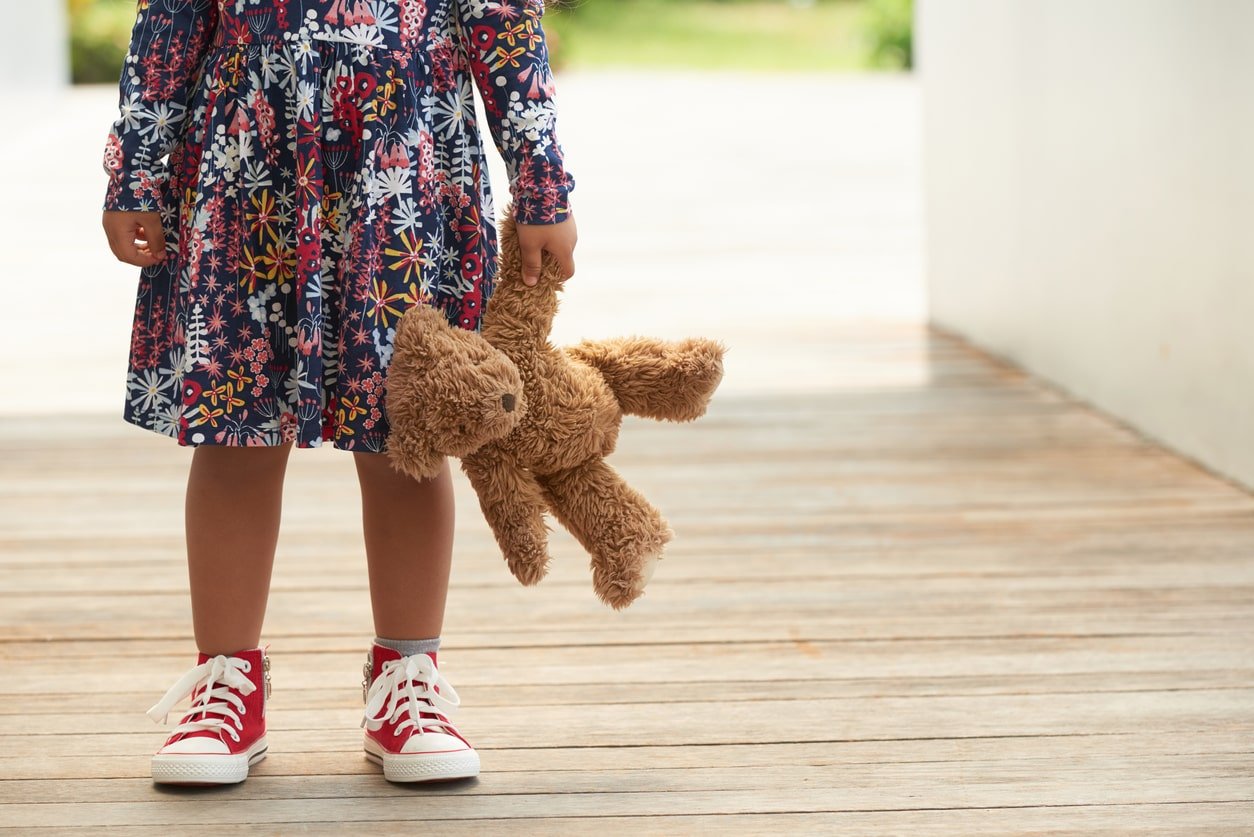We all have a favorite stuffed animal from our childhood. Mine was Chippy, a stuffed chipmunk (no one accused me of being creative with my names). Chippy occupied my bed far longer than I care to admit. I remember being seven or eight and thinking, “I’m too old to sleep with a stuffed animal.” But my bed seemed strange if he wasn’t lying close by.
I didn’t cuddle or interact with him at that point. I didn’t carry Chippy around with me. But his presence made me feel comfortable. I haven’t seen or thought about Chippy in at least a decade. However, I can still describe every detail of that stuffed animal, from the white on his belly to the missing plastic nose my dad unintentionally (he claims) knocked off with a mini-baseball bat.
Initially, I felt strange sharing all these details about a childhood memento. I mean, who remembers so much about a stuffed animal? It turns out plenty of adults are in the same boat.
Many Adults Have Their Childhood Stuffed Animal
In 2017, the Build-A-Bear Workshop commissioned a study of 2,000 adults, and more than half said they still have their childhood stuffy. Nearly one-third of those surveyed said comfort was the first thing they considered when picturing it.1
Now, as a dad in my mid-30s, I’m watching it happen all over again from a completely different perspective, that of my 2-year-old daughter, Adley. She started preschool for the first time in January. The first few days of drop-off were difficult, which we anticipated, but it didn’t make it any easier.
My wife and I began second-guessing ourselves, as I suspect most parents do. Is our daughter emotionally ready to be away from us for four hours each day? Did we start her in school too soon? But after a week, we realized our concerns were unfounded, and she was doing great!
Playing ‘Where’s the Water Bottle?’
The school takes pictures and posts them on its website so we can see all the fun things Adley’s class did each day. After a couple of weeks, my wife and I noticed a consistent theme: Adley’s water bottle.
Not in a few pictures, but in every photo. Every day.
- When the kids were reading together, Adley was clutching her water bottle.
- When they are in P.E. class and running in the gym, Adley is holding her water bottle.
- When she is climbing on the playground, Adley is holding her water bottle.
At first, I just found it entertaining.
It was like a “Where’s Waldo” book trying to identify the location of the water bottle in each picture. But then I began to wonder why she never put it down. Is this normal? Is this healthy? It turns out the answer to both these questions is yes.
Transitional Objects Are Common
Researchers and scientists refer to these as transitional objects. Usually, they take the form of a blanket or stuffed animal (like Chippy), but they can be almost anything, including Adley’s water bottle.
A study published in 2016 found between 60 and 70 percent of children in the United States and the United Kingdom have some transitional object.2
This concludes it is common.
A Giggle Magazine article states, “Most psychologists and experts today agree that these attachments are not unhealthy at all and may lead to a higher level of self-esteem and comfort.”3
This concludes it is healthy.
Another study suggests a child’s strong attachment to a transitional object can indicate a strong bond with a parent and overall happiness.4
This concludes it can lead to strong connections between parents and their children.
Attachment is a Good Thing
I began my research, unsure of what I would find. But now I’m convinced Adley’s attachment to her water bottle is not only completely normal but also a sign of happiness and growth. It’s also a natural sign of development and a coping mechanism to fight separation anxiety.
Is it strange that she chose a water bottle, not a blanket or stuffed animal? Sure. But it seems like a simple compromise to make as Adley continues her transition into a new environment. Experts say the attachment to these objects intensifies around three and usually begins to wain within a year or two. But it can continue into the later stages of childhood, which isn’t bad.4
The question for my family is, will Adley’s attachment to water bottles reach Chippy territory? I’m sure Chippy is still in a closet at my parent’s house. Get me a plane ticket and 15 minutes in my childhood bedroom, and I’m willing to bet I could find him. This is our connection to our favorite childhood stuffed animals or favorite objects. In a way, it’s a gateway to our childhoods themselves.
Fond memories that never truly go away; they’re just hiding in the back of the closet.


